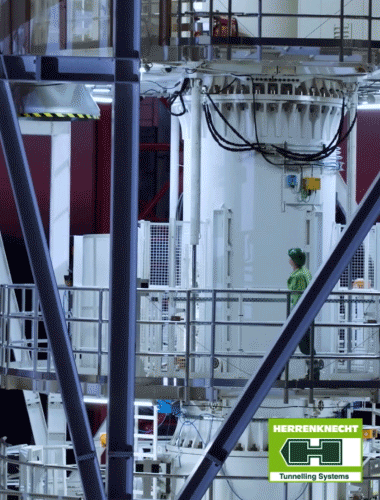Governor supports mega water tunnels project
Jul 2012
Shani Wallis, TunnelTalk
- After signing into law billions in State funds for California's high-speed rail project last week, this week Governor Jerry Brown declared strong support for another mega-dollar infrastructure project; this time for the $14 billion tunnelling project to secure delivery of fresh water from the State's abundant north to its thirsty south and Central Valley agricultural industry.
-

CBS Channel 5 video coverage
- "I wanna get this thing done. We all gotta make it work somehow," said Governor Brown at a press conference yesterday (Wednesday 25 July). Present at the conference was Secretary of the Interior, Ken Salazar, a stakeholder in the massive infrastructure proposal. Brown's tone and comments expressed some of the frustration surrounding a project that has been discussed for several decades and has drawn controversy and conflict between water users in different parts of the State as well as environmentalists and residents and those who object for different reasons to the plan.
- The proposed project is designed to increase capacity and secure the future of a vast system of canals that delivers fresh water from the Sacramento-San Joaquin River system and its Delta network of marshes and channels. These have suffered ecological decline as more water is extracted each year into the supply canals.
-

Plan of alternative routes for the massive twin tube tunnel project
- The preferred route, from three underground options that have been studied, is to build a parallel set of 37 mile long x 33ft i.d. tunnels (60km x 10m) directly under the Delta. These would feed water from the Sacramento River in the north, near the town of Hood, south of Sacramento, to a set of massive Federal and State-owned pumping facilities in the south, near the town of Tracy. Here the water would be lifted into the delivery canals of the State Water Project and the Central Valley Project. These conveyance systems deliver huge amounts of water to about 25 million Californians living in the Bay Area to San Diego. They also irrigate some 3 million acres of farmland.
- The parallel set of deep, large diameter tunnels are the preferred alternative to an original plan for canals to be built around the perimeter of the Delta to provide the extra capacity and secure water delivery to the pumping facilities. Among many concerns about the current water supply system is the condition of the many miles of earthen levees that ring the Delta and protect its fresh water from contamination by the sea. These would be damaged and perhaps lost in an earthquake, a situation that would allow salt water to reach the pumps and disrupt the water supply for months or years.
- The twin 33ft i.d. bored tunnels under the Delta are sized to deliver 9,000ft3 to 15,000ft3 of water per second. The $14 billion cost of the tunnels, which could rise by another $9 billion if the cost of restoring damaged wetlands and other environmental considerations are added, would be paid for, ultimately, by consumers. The California Department of Water Resources, as the wholesaler of water supplies to regional water authorities that include the Metropolitan Water District of Southern California (the largest, and serving the megacity of Los Angeles), the Westlands Water District in Fresno and the Santa Clara Valley Water District in the Bay Area, is the lead agency for the project.
-

Tunnels will feed water to massive canal system
- Having received strong endorsement and support from the State and Federal Governments, and having identified the key elements of the project, the parties involved in developing the scheme are expected to issue a draft Bay Delta Conservation Plan and corresponding Environmental Impact Report/Environmental Impact Statement documents for public review by this Fall. At the same time, RFQs (requests for qualification) will be called to begin the process of engaging engineering firms to complete detailed design of the different elements of the project.
- The feasibility of excavating long, large diameter tunnels under the Delta is confirmed by technical developments in TBM technology. A number of technologically demanding water tunnel projects have been completed in recent times. Among these are the Arrowhead water supply tunnels built by the Metropolitan Water District (MWD) through the San Bernadino Mountains behind Los Angeles. Given their experience and expertise, members of the MWD's engineering department are contributing to the planning and technical discussions for the proposed Delta project tunnels.
- According to a contact at the MWD, early conceptual studies have the 37 mile (60km) long tunnels divided into five or six reaches with each reach awarded as a separate contract. Multiple TBMs will be used on the project, working from several intermediate access shafts. If construction was to start in 2017, it could be completed by 2026. The MWD contact also told TunnelTalk that geological investigations along the alignment are being conducted in parallel with enviornmental documentation to determine if the tunnel configuration can be optimized before preliminary design begins in 2013.
- Ahead of moving into project procurement however, there are many hurdles to overcome. Environmentalists, local residents and opposing political figures will all need to be convinced. But security and environmental considerations offered by the deep level twin tunnel concept should win over the most ardent of skeptics. To promote the scheme, and inform the public about the necessity for the development, a great deal of study data is available at The Bay Delta Conservation Plan website.
-
Mega water tunnel plan for California - TunnelTalk, February 2010
Governor signs California HSR funding bill - TunnelTalk, July 2012
Clawing success from the extreme at Arrowhead - TunnelTalk, December 2007
|
|
|
|
|
Add your comment
- Thank you for taking the time to share your thoughts and comments. You share in the wider tunnelling community, so please keep your comments smart and civil. Don't attack other readers personally, and keep your language professional.

